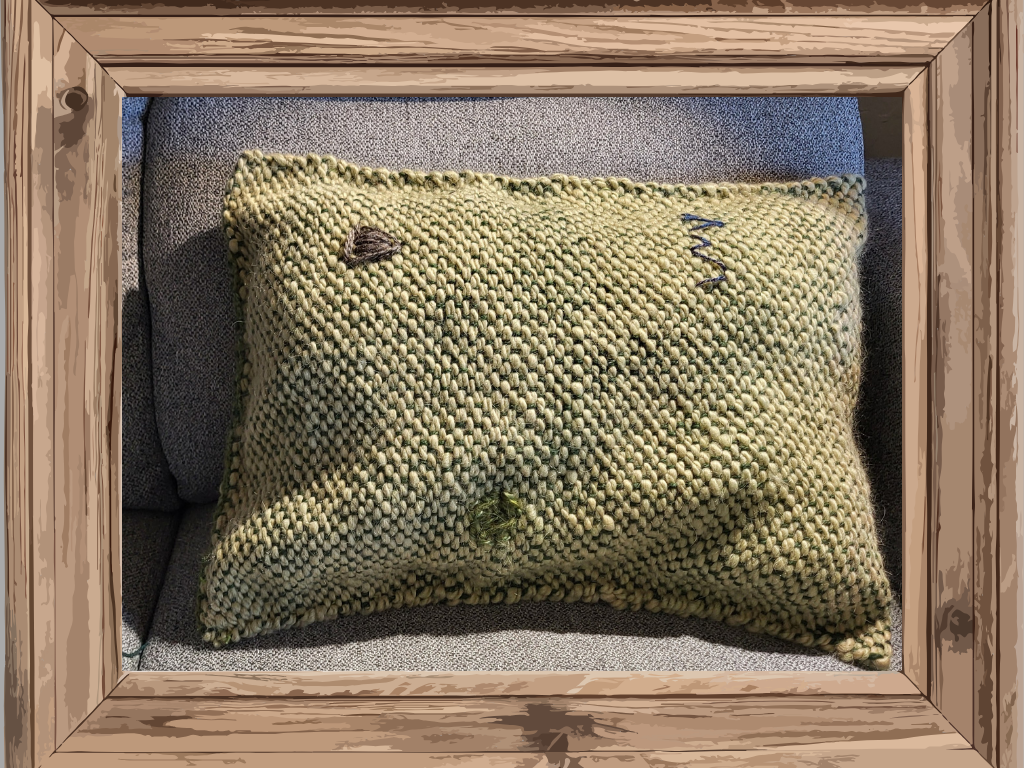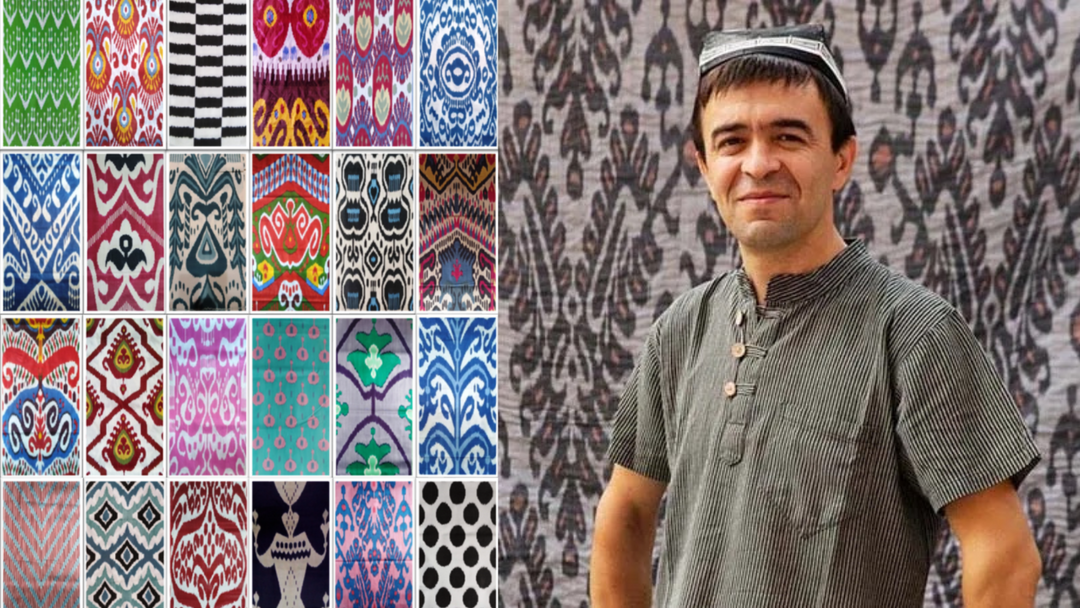I’m back from our whirlwind three week "Three ‘Stans Tour" to Central Asia, though still recovering from jet lag (12 time zones is a LOT!) and the cold that got passed around our tour group. The tour was everything I hoped for and more.
I have hundreds of photos and videos, some amazing pieces of art that I brought home or will be shipped to me soon, new relationships, deeper understanding, and a trunkful of memories to cherish. (I’ve included a few photos to give you a tiny taste here. You’ll see many more over the coming weeks and months.)

Embroidery Artists Connect--Munira Akilova from Tajikistan & Madina Kasimbaeva from Uzbekistan
With so much to choose from, it was tough to select a topic for my first report after my return. But what struck me as perhaps my most lasting impression was my answer to the fear that keeps so many people from even considering travel to this remote and largely unknown (in the West) part of the world.
My answer is the same as it was before the tour: the typical Western fear is wildly overblown. But after the tour, I can explain my answer with a more recent, nuanced experience in the context of today's very complex and seemingly crazy world.
Most people I talk to can’t find the ‘Stans on a map. When I tell them that it’s located south of Russia, west of China and north of Afghanistan, their first reaction is, “Oh my God, it must be so dangerous there! Why in the world would you want to travel there?” (There was concern even among our adventurous tour participants about the exact flight path to Tashkent and how close to Ukraine we would be flying.) The Western perception of overwhelming danger ratchets up when they learn that Islam is the predominant religion in the region.
The reality on the ground is far less dangerous. At the same time, the geo-political and cultural context is a lot more complex than the typical American world view.

Bukhara-Afternoon Tea
I think everyone on the tour left with the overall feeling that, in general, the ‘Stans are a lot safer (and much cleaner!) than typical American cities. Although we occasionally saw policemen, I don’t remember seeing guns on display. Public buildings were not blocked off, and the only places we had to go through metal detectors was at airports. The one exception was when some central streets in Bishkek, Kyrgyzstan were blocked off, preventing our visit that day to a central market, during the visit of the President of Azerbaijan.
One tour participant commented about her surprise at seeing far less obvious poverty and overcrowding than she was expecting, after having traveled to India, Pakistan, and southeast Asia. In three weeks, I recall seeing only 2 beggars, despite visiting all the highest tourist traffic areas wherever we went.
The cities boasted all the infrastructure of modern life, including metros, traffic lights, skyscrapers, and advertising for many recognizable global brands. The streets were packed with modern cars, not donkeys or rickshaws (though we did see lots of animal crossings in the rural areas). Wherever we went, even in the rural areas, the local people seemed as tech-saavy as the typical American.

Bread at Chorzu Bazaar of Tashkent



Spices at the Chorzu (Crossroads) Bazaar in Tashkent
We experienced amazing hospitality wherever we went. Fresh “organic” food completely dominated our delicious menus, and we all ate too much! (As usual, my bread-a-holism reared its head in the presence of fresh-baked bread everywhere we went.)
Our accommodations at locally owned hotels and homestays featured typical Western plumbing, hot water and internet connections. (Granted, our tour was planned with our guests in mind and less luxurious accommodations were certainly available.) American dollars were accepted (without any major currency conversion mark-up) at most tourist shops and many smaller local shops as well.

Plov Cooking in the Giant Pot
There were only two memorable exceptions to the “modern cities everywhere” impression: (1) we couldn’t find American-style cough drops/syrups or decongestants in the pharmacies of any of the three countries; and (2) public restrooms had a much higher percentage of “Asian” (squat) toilets than Western-style toilets.

Ubiquitous Chevy Autos (Produced in Uzbekistan)
So what about the geo-political fear factor? Coming from North America, the Ukraine war was top of mind. We were very aware and perhaps reluctantly a little nervous, knowing that Putin was in Uzbekistan just days before us, for the meeting of the Shanghai Cooperation Association (SCO).
The SCO, a Eurasian political, economic and security forum founded in 2001, is comprised of eight member states: China, India, Kazakhstan, Kyrgyzstan, Russia, Tajikistan, Pakistan and Uzbekistan (with Iran soon to join). Afghanistan, Belarus, and Mongolia are observer states, while Armenia, Azerbaijan, Cambodia, Nepal, Sri Lanka and Turkiye are dialogue partners. For Americans, that’s a pretty scary line-up of countries in the current global political climate.
We were also very aware of the recent border clashes between Tajikistan and Kyrgyzstan that received a lot of publicity in the global media. (We even saw physical evidence of the shooting as we departed from Tajikistan—more about that in a future blog.) The recent policy clashes between the US and China were also top of mind. The ever-present threat of Islamic terrorism and concerns about religious oppression of women also lurked in our thoughts as we began our journey.
So what did the current geo-political and cultural context look like on the ground? Not surprisingly, the political jockeying among political leaders (and their prominence in global media reporting) had little impact on our overall experience.
We saw enormous cultural and ethnic diversity in the countries we visited, and they all seemed to get along just fine. We had local guides from Uzbekistan (Mirzo), Tajikistan (Munira) and Kyrgyzstan (Ulan).
Munira and Mirzo generally communicated in Russian (since Tajik is Farsi-based and Uzbek is a Turkik language). Mirzo and Ulan spoke to each other in a combination of their native Uzbek and Kyrgyz languages (both Turkik languages with a lot of commonalities), Russian and English.
We saw the Tajik culture and language dominate in Bukhara and Samarkand, both located in modern-day Uzbekistan. Munira chatted with most Uzbek people in this region in Tajik rather than Russian.

Amusement Park Nextdoor to a Magnificent 10th Century Samanid Mausoleum in Bukhara (Note the Coca-Cola and "Xot-Dog" Signs)

Samanid Mausoleum in Bukhara (built in 905) (not a reconstruction)
Everywhere we went, we saw the ethnic diversity as well as commonalities. Within two days in Kyrgyzstan, we stayed overnight at a beautiful homestay owned by a second-generation ethnic Russian family, ate lunch with an ethnic Chinese family, and finished off with dinner at the home of a Uighur (Chinese Muslim) family that had been in Kyrgyzstan since the 1800’s.
Everywhere we went, we experienced some customs and language derived from the common Muslim history. For example, the standard greeting in all three countries is “salom aleikum” or “assalomu aleikum.” “Rahmat” means “thank you” in all three countries.
But all three 'Stans have secular governments, and religious practice is a private matter. Girls and women were active and visible wherever we went, and we saw very few wearing a hijab or even more concealing clothing. Clothing was generally more “Western” in Kyrgyzstan and somewhat more traditional, with long blouses over pants for women and black and white skull caps for men (especially in rural areas) in Uzbekistan and Tajikistan. We did meet some male students studying at a private madrassa in Kyrgyzstan, but they were anxious to practice their English and tell us about their various language studies.

Earthquake Monument in Tashkent (with Artwork in Background Celebrating All the Nationalities in the Soviet Union)
The Soviet past was an integral part of the cityscapes we saw and the visible history of all three countries. All three of our local guides (who were born during Soviet times and experienced the transition to independence) took great care to explain their perspectives on their Soviet past. All three agreed that there were both good and bad aspects of the Soviet times-"two sides to the coin." All three guides mentioned education, health care and gender equality as major positive elements of life under the Soviet Union.

Picking Cotton by the Side of the Road-Uzbekistan

Metro Station in Tashkent-Celebrating a Russian Cosmonaut

Museum in Remembrance of the Victims of Repression (during Russian and Soviet times), Tashkent
Ukraine was obviously on the minds of the guides, but they were circumspect about their comments. All, however, commented on the major new influx of Russian “tourists” following Putin’s mobilization of reservists. We saw many Russians in the larger hotels, and lots of Russian-filled tour groups. There was speculation that the sudden increase in traffic jams in Bishkek, Kyrgyzstan was the result of the influx of Russians.
All the guides also commented on the fact that as landlocked countries with a shared history surrounded by Russian and China, with their major political and economic influence, and the current chaos in Afghanistan, Central Asian countries had to try to balance their desire for independence with the political, economic, and security realities. None were anxious to repeat the recent Ukrainian experience.
I came away with the overall impression that the people of Uzbekistan, Tajikistan and Kyrgyzstan are constantly engaged in a delicate balancing act—recognizing their shared history and customs while accepting and celebrating ethnic diversity. At the same time they are well aware of the challenges, risks and potential opportunities that come with being surrounded by their much larger and more powerful neighbors. They work hard to maintain positive, but not subservient relationships. For an interesting “Western” analysis on the current politics in the region, check out Tuesday’s article from Reuters entitled, ‘We want respect’: Putin’s authority tested in Central Asia.
I believe that Americans could learn a lot from the long Central Asian experience as we try to navigate the new global reality of not being the sole superpower on the block, a population that is ever more diverse, and realizing that we can no longer impose our worldview on the world by force or even economically. Central Asia has five thousand years of experience as a multi-cultural society, both as the result of trade along the Silk Road, and wave after wave of invasion and conquest.
Although there is not perfect harmony, the people of the ‘Stans understand the critical need to get along with each other and have found productive ways to do so, especially when they are rarely in control of their own destiny. My prayer is that Americans will start to take the long view and realize that diversity can be a strength for good rather than merely the source of conflict. If we don’t, we could be in for some very tough times ahead.







Fascinating perspective. Thank you so much for sharing – I always enjoy following your unique journeys and learning more about Central Asia!
I would have liked to join your travel but sadly I couldnot afford it. I have been in Usbekistan with my husband in 2015 and in Iran with my daughter in 2016 and I have to admit these were the best and most beautiful travel experiences I ever had. Although it was not easy to communicate with the people in Uzbekistan as I cannot speak Russian they were the most friendly and helpful people you can imagine. And same in Iran, although almost all thr younger people speak perfect Englih and the older ones French. These countries are so beautiful, so rich diverse cultures from prehistoric times to our days. I hope I will be able some day to visit these countries again.
Interesting reading and astute observations. I heartily agree with your closing statement – “that Americans will start to take the long view and realize that diversity can be a strength for good rather than merely the source of conflict. If we don’t, we could be in for some very tough times ahead.” It is long past time, actually, for Americans to take a world view.
Leave a comment